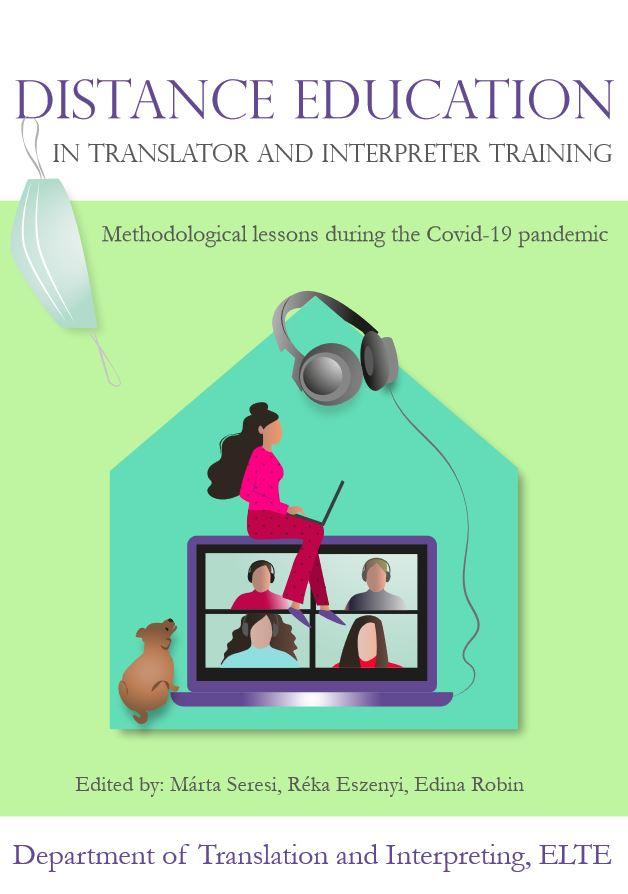
The title above is taken from the book recently published by our department on the lessons we learnt from the spring semester of 2020. We run MA courses in translation (EMT) and interpreting, conference interpreting (EMCI), audio-visual translation and distance learning courses in translation, revision, and terminology.
The circumstances of courses that normally required the presence of students and teachers radically changed in March 2020. We realised this was the new normal in our classrooms, at least for the unpredictable, but hopefully only near future. We carried on with teaching and learning, and lots of new skills, tricks and lessons were learnt in this extraordinary period. And we kept asking ourselves, and our students questions on how distance education should be given in courses where personal presence is much needed and appreciated. What is the optimal amount of tasks that brings the students to the competence levels required and is still optimal as workload for the tutors? What should the mode of instruction be? Synchronous, asynchronous of a combination of the two? What platform(s) should be used? How should exams be organised so that they test students in a valid, fair manner, granting all participants equal opportunities? And how do our choices and preferences fit into the institutional framework of the university?
These questions, and some answers given to them contributed the backbone of a volume of studies we published at the end of 2020. The topics include classrooms, platforms and exams, translator, audio-visual translator, interpreter and PhD training as well. One of our authors, Szilvia Kovalik-Deák describes the shift from presence to online as follows:
The classroom was filling up with students. Everyone was talking at the same time, a routine before class. Someone came up to me and inquired about a translation problem. The place was bustling as usual. Then I turned to my students and asked the same question I had always asked, namely how they felt on that beautiful spring day. We were talking in French, our common language for work. I asked each member an individual question, which was the signal to focus their attention on class. With this, the seminar based on interactions between lecturer and student, student and student started. (2020:6)
The screen is filling up with faces. We are chatting a few minutes before class, as usual. The students are not speaking at the same time but there is a chance for everyone to say a couple of words. I can see one of my students’ cat stretching lazily and jumping off the desk. Bence has forgotten to switch on his microphone again, so I remind him to do so. Then, as always, I turn to my students and ask how they are feeling themselves on this beautiful, spring day. We are talking in French, our common language for work. I am asking each member an individual question, which is the signal to focus their attention on the class. With this, the seminar based on interactions between lecturer and student, student and student starts. Slightly differently, but anyway, almost as usual… (2020:16).
Some colleagues compiled questionnaires to find out the usefulness of the tools they employed in the course to make up for the lack of personal, presence contact, like fora, or recordings, while others used artificial intelligence to test students’ progress. We have learnt that courses in subtitling, translation projects or conference interpreting can all be given in the online mode, at an acceptable standard. I am not sure if this is becoming the new normal, but in each case, all our online attempts and effort had elements we will stick to once we return to our real classrooms. These include the vast amount of tasks and assignments neither printed nor sent by e-mail but uploaded to learning management systems and drives, the new platforms and applications we learnt to use that can successfully complement presence classroom communication, using artificial intelligence to assign and correct tasks that can be done without human assistance, and last but not least the enormous flexibility and motivation form both the students’ and the instructors’ part that made and makes our courses work in these extraordinary times.
The closing article in the book lets the students’voices be heard. By answering open-ended questions, they describe their experiences of the spring semester of 2020.
I think we managed to get the most out of this situation. So, high-five to everyone!!! :* (Robin, 2020:189)
Our book was published in Hungarian at the end of 2020 and is expected to come out in English in May 2021.
Details
- Publication date
- 24 January 2021
- Language
- Dutch
- English
- Latvian
- EMT Category
- Pedagogical initiatives
